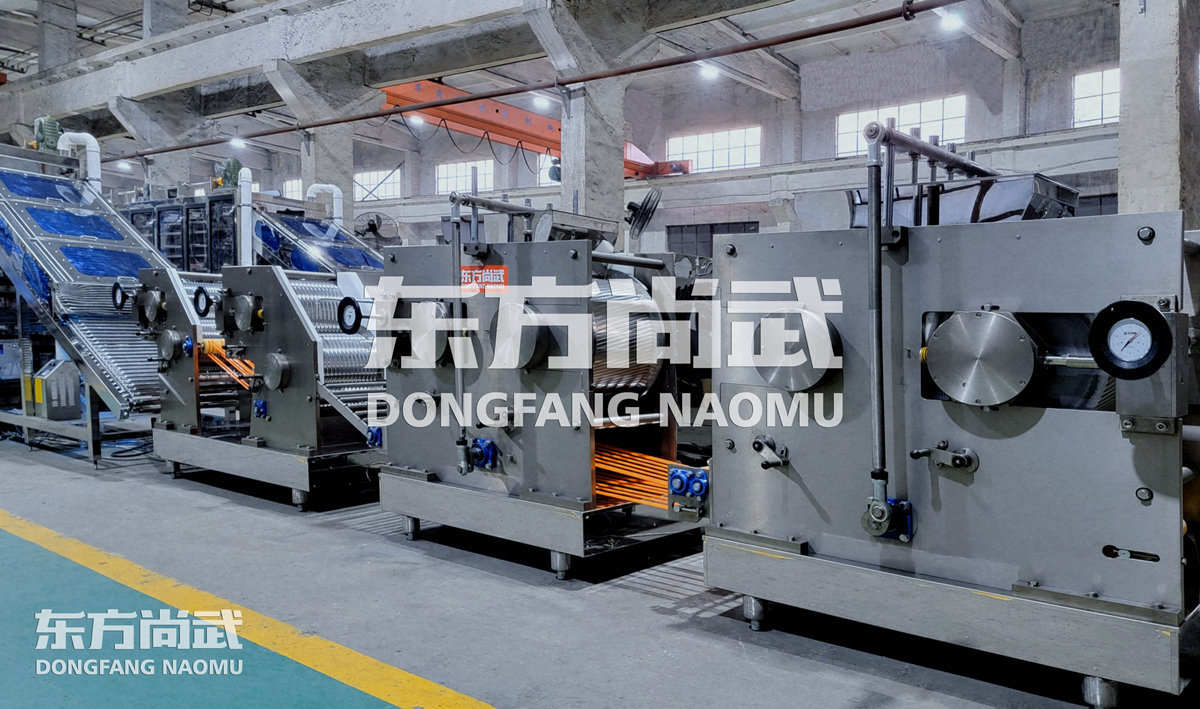The Importance and Operational Guidelines of Composite Calendering in Instant Noodle Production
Classification:
News
Group News
Industry News
Special Reports
Author:
DONGFANG NAOMU
Source:
www.noodlemachinery.com
Release time:
2025-07-02
The composite calendering process plays a critical role in the manufacturing of instant noodles, ensuring dough integrity, balance, and uniformity. Proper execution of this process prevents dough damage, misalignment, and excessive thickness, all of which are essential for maintaining product quality. The Zhengzhou Dongfang Naomu Food Machinery Co., Ltd. emphasizes the significance of precise operation in this stage to achieve optimal results in instant noodle production.
Before initiating the instant noodle production line, a thorough inspection must be conducted to verify that all components are in proper working condition. This includes checking the positioning of the transmission belt and chain, ensuring the stability of safety protection devices, and confirming that no foreign objects, such as tools or debris, remain on the equipment. Any oversight in this preliminary check could lead to operational inefficiencies or even equipment malfunction during production.
Additionally, each shift should begin with an empty test run of the machinery. This step is crucial for identifying any potential mechanical issues before actual production commences. Once the instant noodle machine is confirmed to be functioning normally, the dough can be transferred from the curing machine to the hopper of the composite calender. This marks the beginning of the tableting phase, where the dough undergoes pressing to achieve the desired thickness and texture.
A key step in the composite calendering process occurs when the two dough sheets, rolled out by the first two pairs of pressing rollers, descend onto the mesh belt below. At this stage, operators must manually overlap the two dough belts before feeding them into the next set of composite pressing rollers. This manual intervention ensures that the two separate dough layers are seamlessly combined into a single, uniform sheet. Proper execution of this step is vital, as any misalignment or uneven pressure could compromise the dough's structural integrity, leading to defects in the final product.
In summary, the composite calendering process demands meticulous attention to detail at every stage—from pre-operation checks to manual dough alignment. By adhering to these operational guidelines, manufacturers can maintain consistent dough quality, prevent production delays, and ensure the efficiency of the instant noodle production line. The precision and care applied in this process ultimately contribute to the superior texture and uniformity that consumers expect from high-quality instant noodles.


